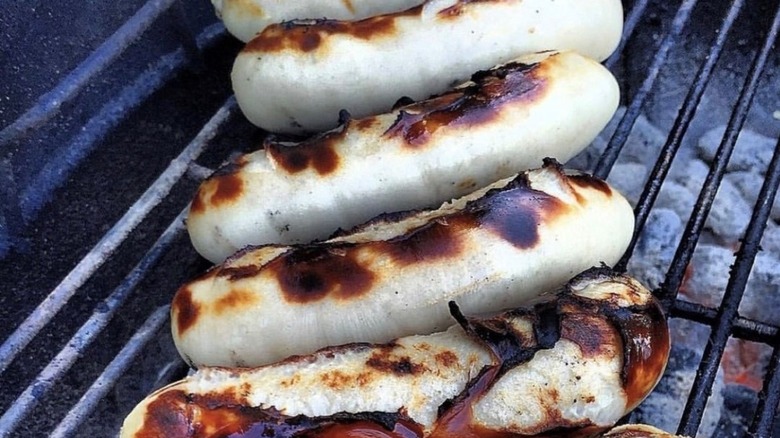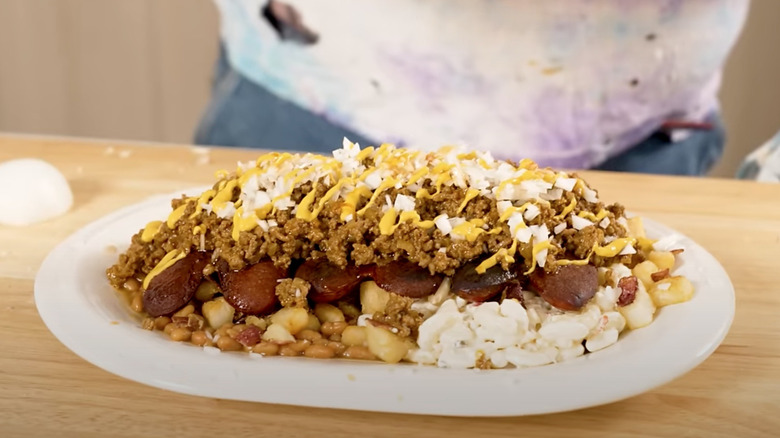The 1920s Origins Of White Hot Dogs
It might look like a regular hot dog, but the white hot dog — or "white hot" as it's lovingly called in parts of New York state — brings its own flavor and backstory. Created in the 1920s by people in Rochester's German community — many accounts say a man named Max Russer was responsible — this unique sausage was originally known as the poor man's hot dog, as it contained more affordable cuts of pork, beef, and veal seasoned with mustard and spices. Unlike the more typical hot dogs we know, white hots skip curing and smoking, giving the meat a signature pale color and a distinct texture.
At first, white hots were simply the thrifty choice for those on a budget. Today, they've reached the status of regional treasure, especially in western New York. And if you've ever wondered what hot dogs are really made of but maybe didn't want to know too much, rest assured that the white hot's ingredients are refreshingly straightforward.
If you're visiting Rochester or nearby regions of New York, trying a white hot is more than a food experience — it's a right of passage. Locals prefer them grilled to a juicy center with that perfect crispy char on the outside. As for the bun, they'll tell you to keep it simple with a standard roll. After all, there's no need to get fancy and overshadow the white hot's mild, understated taste.
How to enjoy a white hot like a local
Grilled and loaded with flavor, white hots come with their own style and traditions. While a regular hot dog might get plain ketchup or mustard, white hots are often treated to unique accompaniments. In Rochester, one of the best ways to enjoy them is as part of what's called a garbage plate. That would be a hearty mix of home fries, macaroni salad, baked beans, and either white or red hots, topped off with a spicy meat sauce. It's as local as it gets, and yes, it's as messy as it sounds. If the garbage plate feels a bit ambitious for a first-timer, a simpler approach works too. Just use a touch of mustard, onions, or relish to let the white hot's understated but tasty flavors stand out. Locals swear by a good char on the grill, too, so boiling these puppies just won't do.
Beyond being a regional favorite, the white hot reflects a tradition of transformation in American food culture, where humble origins eventually transform into beloved, even gourmet status. Whether you're into hot dog history, still pondering why some call them "glizzies", or just seeking a new take on a classic, the white hot's journey shows how a simple sausage can capture a community's heart. And while the debate over whether a hot dog is a sandwich might go on forever, there's little doubt the white hot has earned its rightful spot on the grill.

